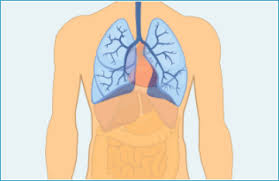Mesothelioma is a rare and aggressive type of cancer that affects the lining of the lungs, heart, and abdomen. The primary cause of mesothelioma is exposure to asbestos, a naturally occurring mineral that was widely used in construction and other industries for its heat-resistant properties. Read till the end to find out the causes, symptoms, risk factors, life expectancy, and treatment of Mesothelioma.
Treatment options for mesothelioma include surgery, radiation therapy, and chemotherapy. The type of treatment that is recommended will depend on the stage of cancer, the patient’s overall health, and other factors. In some cases, a combination of treatments may be used. Asbestos fibers can become airborne and inhaled, which can lead to the development of mesothelioma.
Unfortunately, this is typically a very aggressive cancer and has a poor prognosis. The five-year survival rate for mesothelioma patients is around 10%. It is important for people who have been exposed to asbestos to be aware of the symptoms of mesothelioma and to speak to a healthcare provider if they have any concerns.
Causes Of Mesothelioma
The primary cause of mesothelioma is exposure to asbestos, a naturally occurring mineral that was widely used in construction and other industries for its heat-resistant properties. Asbestos fibers can become airborne and inhaled, which can lead to the development of mesothelioma.
Asbestos was commonly used in a variety of products and materials, including:
- Insulation in buildings and homes
- Automotive brakes and clutches
- Pipe and boiler insulation
- Flooring and roofing materials
- Textiles and other industrial products
When asbestos fibers are inhaled, they can become lodged in the lining of the lungs, heart, or abdomen. Over time, these fibers can cause changes in the cells that can lead to the development of mesothelioma.
It’s important to note that the risk of developing mesothelioma is increased with the duration and intensity of exposure to asbestos. The latency period between exposure to asbestos and the development of mesothelioma can be quite long, it can take 20-50 years or even more develop after the exposure.
It is also important to note that secondary exposure to asbestos can also occur, for example through contact with the clothing or hair of someone who has been exposed to asbestos fibers.
Mesothelioma Symptoms
Symptoms of mesothelioma can vary depending on the location of cancer and the stage of the disease. In general, symptoms may include:
Chest pain:
This can be a sharp pain or a dull ache and is often worse with deep breathing, coughing, or laughing.
Shortness of breath:
This can occur as the tumor grows and begins to press on the lungs.
Persistent coughing:
This can be a dry cough or a cough that produces phlegm.
Fatigue:
This can be a result of anemia (low red blood cell count) or cancer itself.
Weight loss:
This can occur as cancer begins to use up the body’s energy stores.
Lumps or swelling in the neck or face:
These can occur if cancer spreads to the lymph nodes.
Abdominal pain or swelling:
This can occur if cancer affects the lining of the abdomen.
Blood in the pleural fluid (the fluid that surrounds the lungs)
These symptoms can be caused by other conditions, not just mesothelioma. It’s important to see a healthcare provider if you are experiencing any of these symptoms, especially if you have been exposed to asbestos in the past. A chest X-ray, CT scan, or MRI is often used to diagnose mesothelioma, and a biopsy is usually needed to confirm the diagnosis.
Mesothelioma Symptoms Near Death
As mesothelioma is aggressive cancer, symptoms may worsen as the disease progresses, and near the end of life. These symptoms can include:
Shortness of breath:
As the tumor grows and presses on the lungs, breathing may become increasingly difficult.
Chest pain:
This can become more severe and constant.
Fatigue:
As the body’s energy is used to fight cancer, patients may feel increasingly tired.
Weight loss:
As cancer uses up the body’s energy stores, patients may lose weight.
Loss of appetite:
As cancer progresses, patients may lose their appetite and may not feel like eating.
Swelling in the abdomen:
Cancer can cause a build-up of fluid in the abdomen, leading to swelling and discomfort.
Difficulty swallowing:
As the tumor grows, it can press on the esophagus, making it difficult to swallow.
Confusion or disorientation:
As cancer progresses, patients may experience changes in cognitive function.
Palliative care can help to alleviate these symptoms and improve quality of life near the end of life. Palliative care is a type of care that is focused on relieving symptoms and improving the quality of life for patients with serious illnesses such as mesothelioma. It’s important to work closely with a healthcare provider and a hospice care team to ensure that patients are as comfortable as possible during this difficult time.
Life Expectancy Of Mesothelioma
Mesothelioma is a rare and aggressive type of cancer that has a poor prognosis. The life expectancy for mesothelioma patients can vary widely depending on the stage of cancer and other factors such as overall health and age.
The five-year survival rate for mesothelioma patients is around 10%. The survival rate is generally better for patients who are diagnosed at an early stage and those who receive treatment promptly. The stage of the cancer is determined by the size of the tumor and whether it has spread to other parts of the body.
Patients who are diagnosed with early-stage mesothelioma typically have a better prognosis than those who are diagnosed at a later stage. However, mesothelioma is often not diagnosed until it is in an advanced stage, making it difficult to treat.
The life expectancy of a patient with mesothelioma can vary depending on the stage, type, and location of cancer, as well as the overall health of the patient. Some patients may live for several years after diagnosis, while others may pass away within a few months.
It’s important to note that prognosis is not a definitive prediction and that every patient is different. Some patients may respond well to treatment and live much longer than expected, while others may not respond as well. It’s always best to work closely with a healthcare provider to understand the specifics of the situation.
Treatment Of Mesothelioma
Treatment options for mesothelioma depend on the stage of cancer, the patient’s overall health, and other factors. The most common treatments include:
Surgery For Mesothelioma:
Depending on the stage and location of the cancer, surgery may be used to remove the tumor and/or affected tissue. Surgery is often used in combination with other treatments.
Radiation therapy For Mesothelioma:
Radiation therapy uses high-energy beams to kill cancer cells. This can be used in combination with surgery or as a standalone treatment.
Chemotherapy For Mesothelioma:
Chemotherapy uses drugs to kill cancer cells. It can be given alone or in combination with other treatments.
Immunotherapy For Mesothelioma:
This is a relatively new type of treatment that uses the body’s immune system to fight cancer. This can be used in combination with chemotherapy.
Palliative care For Mesothelioma:
Palliative care is a type of care that is focused on relieving symptoms and improving the quality of life for patients with serious illnesses such as mesothelioma.
The specific treatment plan will depend on the stage, location, and type of cancer, as well as the overall health of the patient. Some patients may be eligible for clinical trials, which can offer access to new treatments that are not yet widely available.
It’s important to work closely with a healthcare provider to understand the specifics of the situation and to make an informed decision about the best course of treatment.
Risk Factors Of Mesothelioma
The main risk factor for mesothelioma is exposure to asbestos. Asbestos is a naturally occurring mineral that was widely used in construction and other industries for its heat-resistant properties. When asbestos fibers are inhaled, they can become lodged in the lining of the lungs, heart, or abdomen. Over time, these fibers can cause changes in the cells that can lead to the development of mesothelioma.
Other factors that may increase the risk of developing include:
Duration and intensity of asbestos exposure: The longer and more intense the exposure to asbestos, the greater the risk of developing mesothelioma.
Occupational exposure:
People who work in industries where asbestos is present, such as construction, shipbuilding, mining, and manufacturing are at a higher risk of developing mesothelioma.
Family history:
A small number of cases are caused by inherited genetic mutations.
Smoking:
Smoking does not cause mesothelioma, but it does increase the risk of the disease for people who have been exposed to asbestos.
It’s important to note that exposure to asbestos is the main cause of mesothelioma and that the latency period between exposure to asbestos and the development of this disease can be quite long, it can take 20-50 years or even more to develop after the exposure. It’s important for people who have been exposed to asbestos to be aware of the symptoms of mesothelioma and to speak to a healthcare provider if they have any concerns.
Conclusion:
Mesothelioma is a rare and aggressive type of cancer that affects the lining of the lungs, heart, and abdomen. The main cause of this disease is exposure to asbestos, a naturally occurring mineral that was widely used in construction and other industries for its heat-resistant properties. The latency period between exposure to asbestos and the development of mesothelioma can be quite long, it can take 20-50 years or even more develop after the exposure.
Some patients may be eligible for clinical trials, which can offer access to new treatments that are not yet widely available.
Unfortunately, this disease is typically a very aggressive cancer and has a poor prognosis. It is important for people who have been exposed to asbestos to be aware of the symptoms of mesothelioma and to speak to a healthcare provider if they have any concerns.




